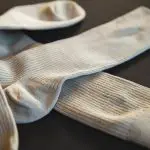If you're diving into the world of fabric creation, understanding yarn measurement units is like deciphering the intricate language of a master craftsman. This guide will equip you with the essential knowledge needed to navigate the complexities of yarn weight categories, ply and twist, yardage and meterage, Tex and Denier, yarn count systems, and wraps per inch (WPI).
Mastery of these measurement units will empower you to confidently select the perfect yarn for your projects, ensuring precise and professional results. Whether you're a seasoned enthusiast or just beginning your fabric journey, mastering these yarn measurement units is a crucial step towards elevating your craftsmanship to the next level.
Key Takeaways
- Yarn weight categories range from lace to super bulky and can affect the thickness and density of the yarn.
- Ply classification and twist direction significantly impact the strength, durability, and appearance of the yarn.
- Yardage and meterage measurements are essential for determining the amount of yarn required for projects.
- Tex and denier are units used to measure the weight and thickness of yarn, with Tex being a universal standard and denier finding application in the textile industry.
Understanding Yarn Weight Categories
If you're a fabric enthusiast, understanding yarn weight categories is essential for selecting the right yarn for your projects. Yarn weight refers to the thickness of the yarn and plays a crucial role in determining the outcome of your project.
Yarn weight categories range from lace to super bulky, each suitable for different types of projects. When considering yarn weight, it's important to pay attention to the yarn fiber composition. Different fibers can affect the drape, warmth, and texture of the finished item. For example, wool and alpaca yarns are great for cozy winter garments, while cotton and linen yarns are better suited for lightweight, breathable items.
In addition to considering yarn fiber composition, you should also think about yarn color choices. The color of the yarn can greatly impact the overall look of your project. When choosing yarn colors, consider the mood or theme you want to convey. Bright, vibrant colors can bring energy and excitement to a project, while muted, earthy tones create a more subdued and calming effect.
Understanding yarn weight categories, fiber composition, and color choices will empower you to make informed decisions when selecting yarn for your next project.
Deciphering Yarn Ply and Twist
Understanding yarn ply and twist is crucial for achieving the desired texture and structure in your fabric projects, especially when considering yarn weight categories, fiber composition, and color choices. Ply classification refers to the number of individual strands twisted together to form a single yarn. This can range from a single ply, which is made of just one strand, to a multiple-ply yarn, such as a 2-ply or 4-ply, indicating the number of strands twisted together. The ply classification significantly impacts the strength, durability, and appearance of the yarn, influencing the overall look and feel of the fabric it creates.
Twist direction, on the other hand, refers to the direction in which the individual strands of yarn are twisted together. Yarn can have an S-twist or Z-twist, with the direction of the twist affecting the behavior of the yarn in knitting, crocheting, and weaving. The following table summarizes the key aspects of ply classification and twist direction:
| Aspect | Description |
|---|---|
| Ply Classification | Number of strands twisted together |
| Single Ply | Made of one strand |
| Multiple Ply | 2-ply, 4-ply, etc. |
| Twist Direction | S-twist or Z-twist |
Mastering these fundamental yarn characteristics will empower you to make informed choices and achieve the desired results in your fabric projects.
Exploring Yarn Yardage and Meterage
To accurately measure yarn for your fabric projects, you'll need to understand the concept of yarn yardage and meterage. Yarn measurement conversions, yardage, and meterage are crucial for determining the amount of yarn required for your knitting or crocheting projects. Yardage refers to the length of yarn measured in yards, while meterage is the measurement of yarn length in meters. Understanding these units is essential as many yarn labels provide yardage, while some may include meterage. To convert between the two, you can use the following formulas: 1 yard = 0.9144 meters and 1 meter = 1.0936 yards.
When estimating yarn length for a project, it's helpful to know that different stitch patterns and yarn weights can affect yardage/meterage requirements. To ensure you have enough yarn, consider purchasing an extra skein or two if in doubt. Additionally, if substituting yarn in a pattern, always check the yardage/meterage to ensure you have an equivalent amount.
Understanding these yarn length estimation tips and tricks will help you plan your projects more effectively, leading to successful and satisfying results.
Grasping Yarn Tex and Denier
Let's begin by comparing Tex and Denier, essential yarn measurement units that determine the weight and thickness of yarn.
Understanding how to calculate yarn weight using these units is crucial for selecting the right yarn for your projects.
Tex Vs. Denier Comparison
Are you familiar with the differences between Tex and Denier when measuring yarn?
Tex conversion is a universal standard for measuring the linear density of fibers, while Denier finds its application in the textile industry.
Tex refers to the weight in grams of 1,000 meters of a particular yarn, whereas Denier measures the weight in grams of 9,000 meters of the yarn.
Understanding the Tex vs. Denier comparison is crucial for fabric enthusiasts, as it determines the fineness and strength of the yarn.
When comparing the two, it's important to note that Tex measures the weight of the yarn, whereas Denier measures the density.
Having a clear grasp of these measurement units allows for precise selection of yarn suitable for various fabric projects, contributing to the mastery of fabric craftsmanship.
Yarn Weight Calculation
Understanding yarn weight calculation is essential for fabric enthusiasts seeking precision in their crafting projects. Yarn weight classification is crucial for determining the thickness and density of the yarn.
To calculate yarn weight, you can use yarn weight conversion formulas to convert between different units such as Tex and Denier. Tex is the weight in grams of 1,000 meters of yarn, while Denier is the weight in grams of 9,000 meters of yarn.
By understanding these units and their conversion, you can accurately assess the yarn weight and choose the most suitable yarn for your project. This knowledge empowers you to make informed decisions about yarn selection, ensuring that your finished fabric meets your desired specifications.
Mastering yarn weight calculation elevates the quality of your crafting endeavors.
Understanding Yarn Thickness
Grasp the yarn Tex and Denier to understand yarn thickness accurately for your crafting projects.
Yarn Tex measures the grams per kilometer of yarn, providing insight into yarn diameter measurement and fiber content.
Meanwhile, Denier signifies the weight in grams of 9,000 meters of yarn, giving you a different perspective on yarn thickness consistency and its impact on knitting gauge.
Understanding these units will empower you to select the ideal yarn for your projects, ensuring that the yarn's thickness complements your desired fabric outcome.
Delving Into Yarn Count Systems
When choosing yarn for your fabric projects, understanding yarn count systems is crucial for selecting the right type and weight for your desired outcome. Yarn count refers to the thickness or fineness of a yarn and is measured using different systems, including the metric and imperial systems.
In the metric system, yarn count is expressed as the number of hanks (length of 1000 meters) per unit weight. For example, a yarn with a count of 20s means that 20 hanks of 1000 meters each weigh a specific amount. The higher the number, the finer the yarn.
On the other hand, the imperial system measures yarn count by the number of 840-yard hanks per pound. In this system, a lower number indicates a thicker yarn, while a higher number signifies a finer yarn.
Understanding these yarn count systems allows you to choose the appropriate yarn for your project, whether you need a thicker yarn for a cozy sweater or a finer yarn for delicate lacework.
Mastery of yarn count systems empowers you to make informed decisions and achieve the perfect fabric for your creations.
Mastering Yarn Wraps Per Inch (WPI)
To master the art of selecting the perfect yarn for your fabric projects, understanding the concept of Yarn Wraps Per Inch (WPI) is essential. Measuring yarn density through WPI allows you to gauge the thickness of a yarn and its suitability for your specific project.
Here are some techniques and considerations to help you master WPI:
- Embrace Patience: Achieving accuracy in WPI requires patience and precision. Take your time to wrap the yarn snugly around the WPI tool, ensuring there are no gaps or overlaps.
- *Emotion evoked: Determination* – Perfecting this skill may require practice and persistence, but the satisfaction of accurately measuring yarn density will elevate your fabric creations.
- Compare Yarn Thickness: Use WPI as a tool to compare the thickness of different yarns. This technique allows you to match the yarn weight required for a pattern, ensuring your finished fabric aligns with the intended dimensions.
- *Emotion evoked: Confidence* – By mastering WPI, you gain the confidence to make informed yarn choices, knowing that your finished fabric will meet the desired specifications.
Frequently Asked Questions
Can You Recommend Any Specific Brands or Types of Yarn That Are Best for Beginners?
You should try Lion Brand Wool-Ease or Red Heart Super Saver for best yarn brands. For beginner yarn types, go for worsted weight yarns or acrylic yarns. These options are durable and easy to work with.
How Can I Prevent My Yarn From Pilling or Shedding After I Finish Knitting or Crocheting a Project?
To prevent pilling and shedding in your finished projects, try using a yarn with longer fibers and a tighter twist. Gentle handwashing and air drying can also help maintain the yarn's integrity.
Are There Any Alternative Uses for Yarn, Beyond Just Knitting or Crocheting?
Looking for alternative crafts? Upcycling yarn opens doors to yarn art and crochet alternatives. You can repurpose yarn for weaving, tassel making, or even macramé. Get creative and explore new possibilities beyond traditional knitting and crocheting.
What Is the Best Way to Store Yarn to Prevent It From Tangling or Getting Damaged?
To store yarn and prevent damage or tangling, use clear plastic bins with lids for visibility and protection. Wind yarn into cakes or balls to maintain shape and prevent tangling. Store in a cool, dry place away from sunlight to maintain yarn quality.
How Can I Tell if a Skein of Yarn Has Been Dyed With Natural or Synthetic Dyes?
To identify natural vs synthetic dyes in yarn, look for certifications like GOTS or OEKO-TEX. Compare dyeing methods and their impact on yarn sustainability and quality. Natural dyes are often more sustainable but may vary in color intensity.
- The History and Evolution of Chamois Fabric - June 22, 2025
- Chamois Fabric on Wikipedia: What You Need to Know - June 22, 2025
- How to Pronounce Chamois Fabric Correctly - June 22, 2025







